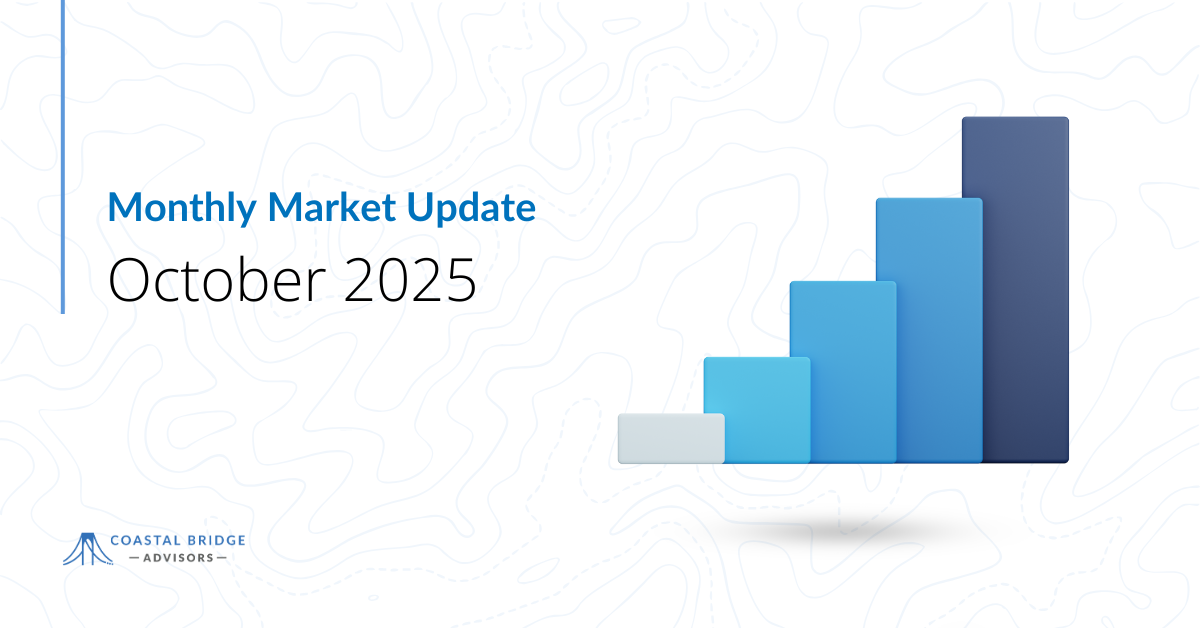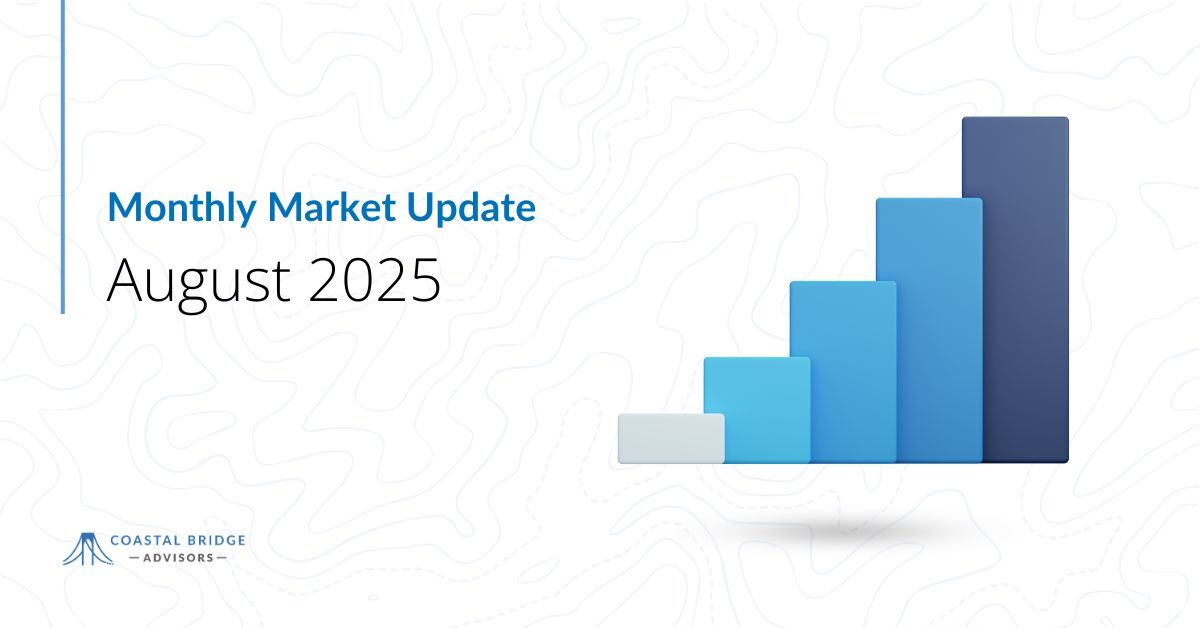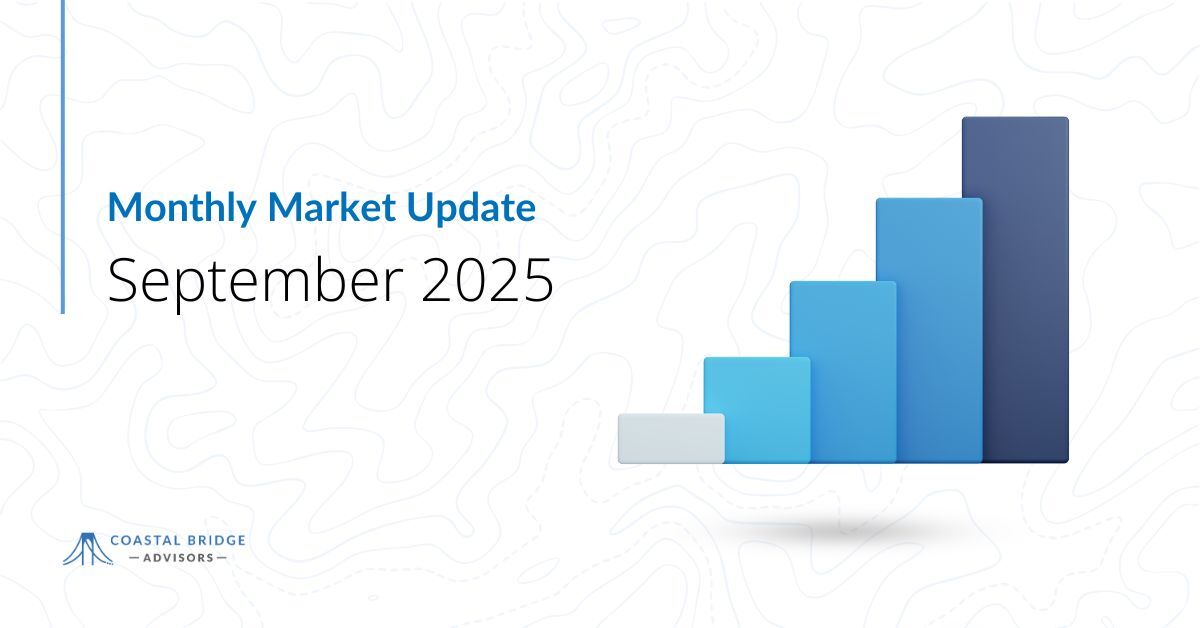Stocks Hit New Highs as Market Navigates Shutdown, Fed Policy, & AI Spending
November 5, 2025
Monthly Market Summary - November 1, 2025
- The S&P 500 Index rose +2.3% in October, bringing its year-to-date return to +17.5%. Large Cap Growth stocks gained +3.6% and outperformed the index, while Large Cap Value returned +0.4%. Major stock indices set new highs, with the S&P 500, Dow Jones, Nasdaq 100, and Russell 2000 all posting a sixth straight month of gains.
- Technology led all S&P 500 sectors, with the Nasdaq 100 gaining +4.8%. Health Care and Consumer Discretionary also outperformed the index, while the remaining eight sectors underperformed, with five sectors trading lower.
- Bonds traded higher as Treasury yields ended lower despite intra-month volatility. The U.S. Bond Aggregate returned +0.6%, while corporate bonds underperformed. Investment-grade delivered a +0.4% total return, and high-yield gained +0.2%.
- International stocks split the S&P 500’s return. Developed Markets gained +1.2%, underperforming the S&P 500, while Emerging Markets returned +4.2%.
Federal Reserve Cuts Interest Rates as Government Shutdown Drags On
Around the same time, a sudden re-escalation of U.S.–China trade tensions rattled the market just weeks before a high-stakes Trump-Xi summit. It began when China expanded export restrictions on rare earth minerals, prompting the White House to threaten a 100% tariff on all Chinese imports if Beijing didn’t reverse course. The threats sparked a stock market sell-off and revived fears of a trade war. However, despite the harsh rhetoric and threats, both sides left room for negotiation. The Trump-Xi summit took place as scheduled in late October, and the meeting yielded several headline agreements that helped ease near-term U.S.-China trade tensions.

This material prepared by Coastal Bridge Advisors is for informational purposes only. Additional data provided by MarketDesk Research. It is not intended to serve as a substitute for personalized investment advice or as a recommendation or solicitation of any particular security, strategy, or investment product. Opinions expressed by CBA are based on economic or market conditions at the time this material was written. Economies and markets fluctuate. Actual economic or market events may turn out differently than anticipated. Facts presented have been obtained from sources believed to be reliable. CBA, however, cannot guarantee the accuracy or completeness of such information, and certain information may have been condensed or summarized from its original source.

%20(1).png?width=508&height=121&name=flourish-primary-logo@2x%20(1)%20(1).png)



